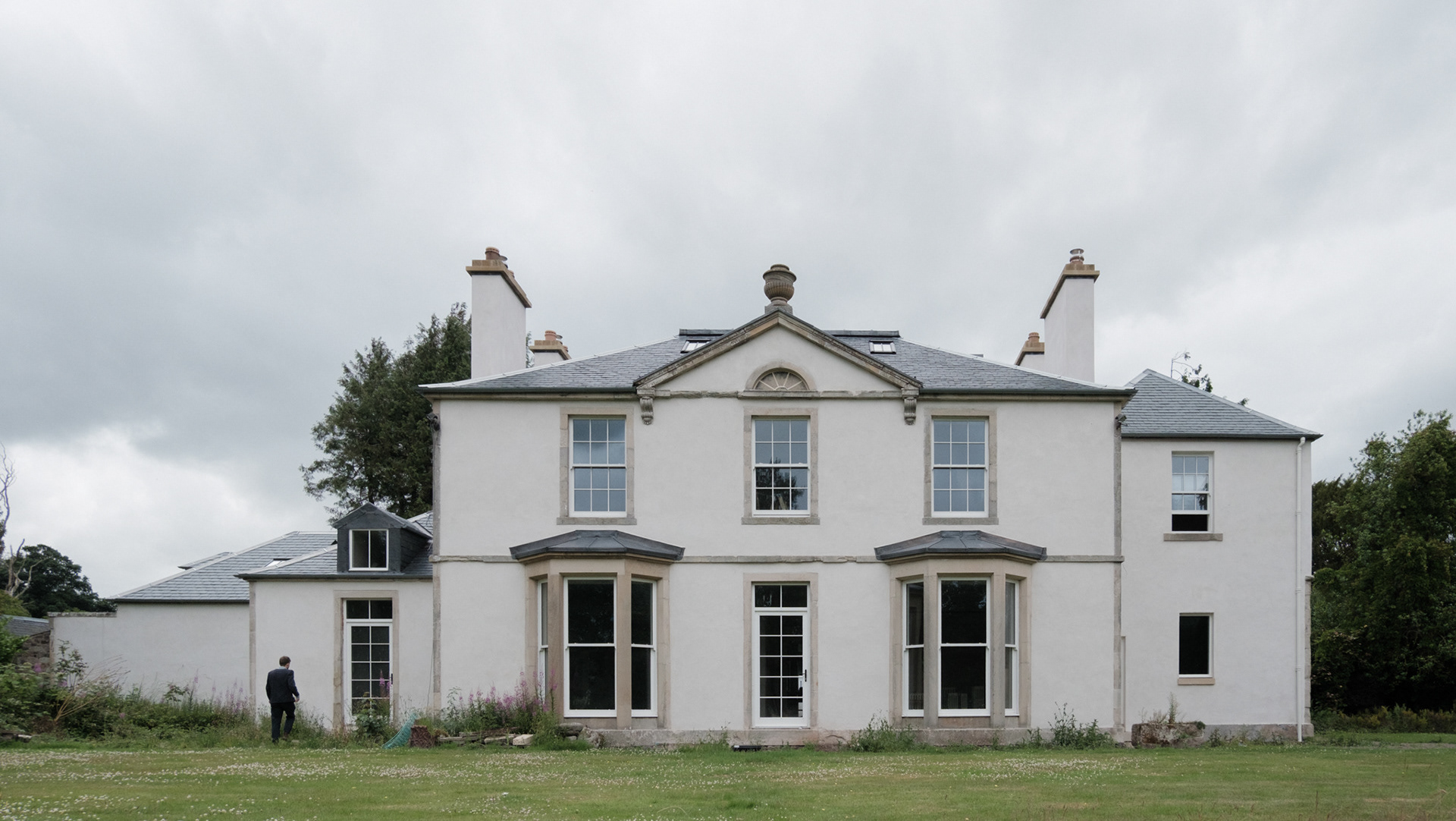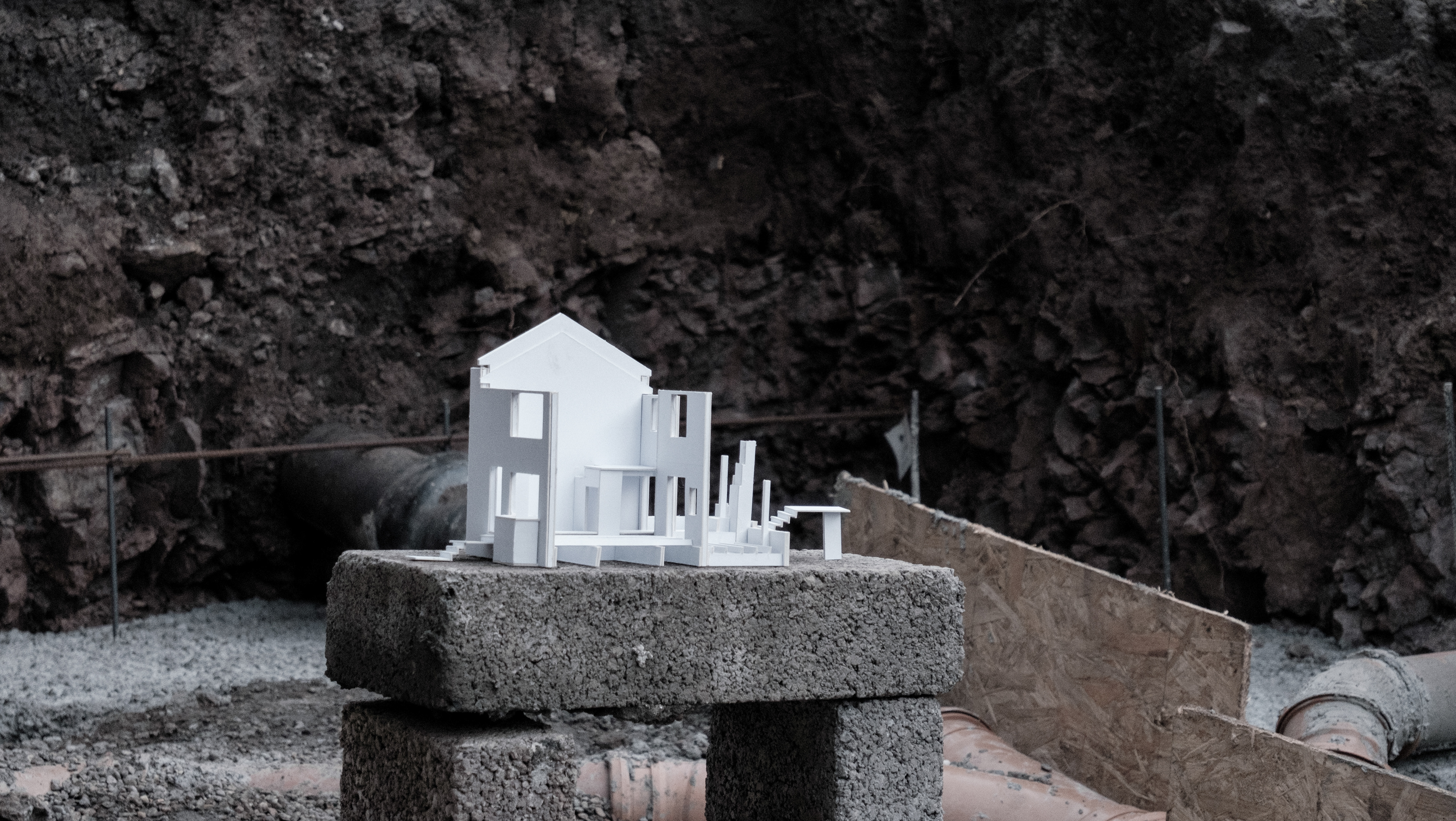Conversion of farm steading with courtyard into four dwellings and two art studios. Planning approved 2023.
A 19th Century Sandstone farm steading with castellated details, Castle Moffat Steading has no castle associated with it. This second stage of development sees the restoration of parts of the steading demolished by previous users as well as the creative re-imagining of a 'ruined' gatehouse.
The steading occupies a beautiful prominent position at the edge of the Lammermuir Hills, looking back across the Firth of Forth to Fife. It sits at the edge between the rolling farmlands of East Lothian and the open hills and heather moor above stretching South to the Borders.
In the first stage, the long barn was converted into studio flats for students of the Chippendale Furniture School. The second phase involves converting the prominent 'Old Cart Shed' into two dwellings and the remaining South and North Ranges into two further dwellings each with their own Art studios. The most prominent intervention is the new North-East 'Gatehouse', a reimagined false ruin in salvaged sandstone from elsewhere on the site that wraps around a green-oak framed conservatory tower with heavy timer framing and a coffered ceiling. Tectonically it draws from siege towers and Scotland's tower houses with their old great halls.
The interventions have been drawn from careful study of historic maps and neighboring steadings to retain the memory of previous buildings whilst creating new landscaped areas, dividing the large courtyard into two parts: a 'working courtyard' focused around the art studios, and a 'garden courtyard' towards the residential end with new tree planting therein.
At the core of the restoration approach is a participation in the notion of craft. By working closely with conservation specialists and contemporary craftsmen from the Chippendale School, this restoration will continue the ambitious and intuitive spirit of making that brought this beautiful steading into being in the first place.











